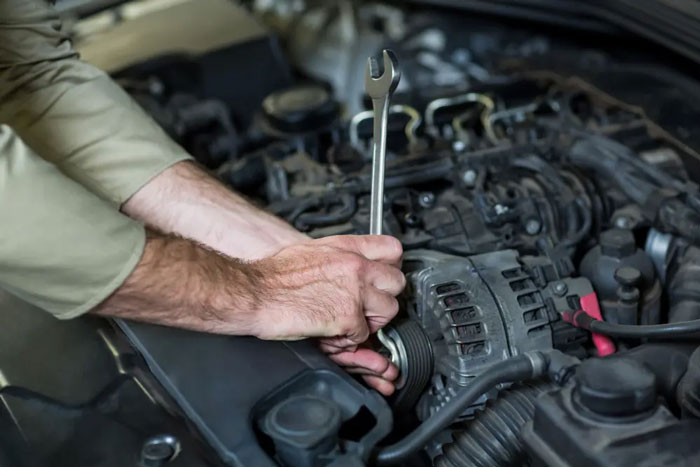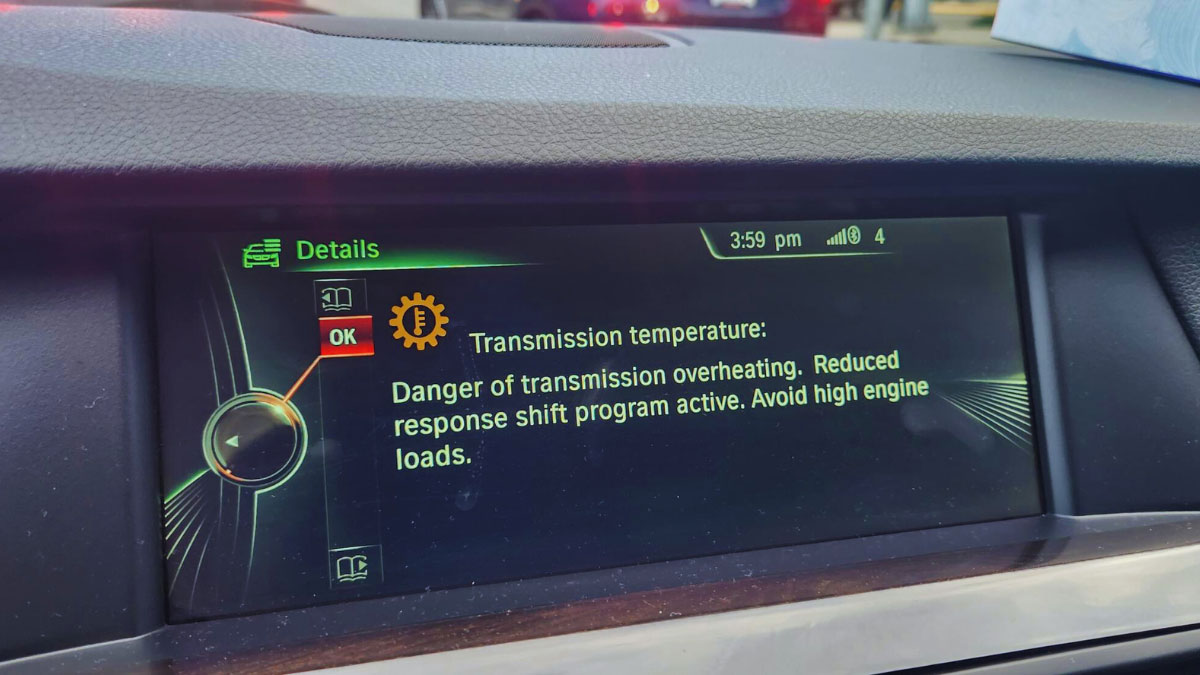Your car’s transmission is like the heart of its performance, and when it overheats, it can spell trouble for your vehicle. Ignoring the early signs of transmission overheating can lead to costly repairs and even total transmission failure. That’s why it’s crucial to recognize the warning signs before they escalate into bigger problems.
In this text, I’ll walk you through the six key indicators that your transmission might be overheating. By staying informed and proactive, you can keep your car running smoothly and avoid those dreaded repair bills. Let’s jump into the signs you should never ignore.
Understanding Transmission Overheating
Transmission overheating occurs when the transmission fluid exceeds the optimal temperature range, usually between 175°F and 225°F. This can reduce the fluid’s effectiveness, leading to reduced lubrication and increased wear on internal components. Understanding the factors that contribute to this condition helps in taking preventive measures.
Key Factors Leading to Overheating
Heavy Towing
Pulling heavy loads increases stress on the transmission. Hauling trailers or boats frequently can push the transmission beyond its design limits, causing the fluid to heat up.
Stop-and-Go Traffic
Continuous acceleration and braking, common in dense traffic, can cause the transmission to overwork. Prolonged engagement of the clutch and frequent gear changes propel the transmission’s temperature upward.
Low Transmission Fluid
Insufficient fluid levels fail to lubricate internal components adequately. This results in friction, thereby raising the overall temperature.
Poor Maintenance
Ignoring regular maintenance can lead to degraded fluid and clogged filters. Contaminated fluid retains heat more, failing to cool the transmission.
- Regular Fluid Checks: Ensure fluid levels are adequate by checking the dipstick regularly. Refill if necessary.
- Scheduled Maintenance: Adhere to the vehicle’s maintenance schedule. Replace the transmission fluid and filters periodically.
- Cooling Systems: Install an external transmission cooler if towing heavy loads. This helps maintain a stable temperature.
- Driving Habits: Avoid frequent stop-and-go driving situations whenever possible. Use lower gears for less strain on the transmission in city driving.
By understanding transmission overheating and implementing these preventive measures, you can maintain your vehicle’s performance and extend the life of your transmission.
Common Causes of Transmission Overheating
Transmission overheating can stem from several underlying issues. Understanding these common causes aids in diagnosing and preventing further damage.

Low or Dirty Transmission Fluid
Transmission fluid: A vital lubricant and coolant for transmission systems.
When transmission fluid levels drop or the fluid becomes dirty, it loses its ability to effectively lubricate and cool the transmission. Key reasons for fluid degradation include:
- Leaks: Fluid leaks lead to low levels, reducing lubrication and causing overheating.
- Contamination: Dirt and debris compromise the fluid’s effectiveness, increasing friction and temperature.
- Old Fluid: Over time, fluid breaks down and loses its cooling properties.
Routine checks and timely replacements of transmission fluid help maintain optimal performance.
Faulty Transmission Cooler
Transmission cooler: A device designed to dissipate heat from the transmission fluid.
If the transmission cooler fails, it won’t reduce the fluid’s temperature, leading to overheating. Faulty coolers arise from:
- Blockages: Debris or sludge blocks the cooler, impairing heat dissipation.
- Leaks: Damage to cooler lines or connections results in leaks, reducing cooling efficiency.
- Wear and Tear: Over time, coolers may deteriorate, losing their effectiveness.
Regular inspections and maintenance of the transmission cooler ensure efficient cooling.
Heavy Loads or Towing
Heavy loads and towing exert significant strain on the vehicle’s transmission. This additional stress leads to higher operating temperatures. Common scenarios include:
- Towing: Pulling trailers or heavy loads forces the transmission to work harder, increasing heat generation.
- Overloaded Vehicles: Carrying maximum capacity or beyond escalates wear and heat.
- Frequent Hill Driving: Exploring steep inclines regularly puts extra load on the transmission.
To mitigate overheating, use appropriate gear settings, avoid overloading, and invest in auxiliary coolers if towing frequently. Regular maintenance and mindful driving habits extend transmission life.
6 Warning Signs of Transmission Overheating
Detecting warning signs of transmission overheating early can save you from costly repairs and extend the lifespan of your vehicle. Various indicators can alert you to an overheating transmission, ensuring prompt action.
1. Burning Smell
A burning smell often signals overheating. When the transmission fluid overheats, it loses its lubricating properties, causing increased friction inside the transmission. This friction can lead to a burnt odor. If you notice a burning smell, especially one that smells like burnt rubber or scorched oil, your transmission could be overheating.
2. Fluid Leaks
Fluid leaks are another red flag. Transmission fluid helps cool and lubricate internal components. When it’s leaking, fluid levels drop, increasing the risk of overheating. Check for red or brown puddles under your vehicle.
3. Slipping Gears
Slipping gears occur when the transmission can’t maintain the selected gear. This results in engine revving or unexpected gear shifts during acceleration. Overheated transmission fluid can’t effectively transmit hydraulic power, leading to gear slippage. Detecting this early is crucial for preventing further damage.
4. Warning Lights
Warning lights on your dashboard serve as immediate indicators of issues, including transmission overheating. Modern vehicles have temperature sensors that trigger warning lights when the transmission fluid temperature exceeds safe levels. Never ignore these lights; prompt action can prevent severe transmission damage.
5. Unusual Noises or Vibrations
Unusual noises or vibrations are often signs of transmission issues. Overheating can cause metal components to expand and come into contact, resulting in grinding, whining, or vibrating sensations. Be alert to these changes, as they suggest the transmission is under strain and may overheat.
6. Loss of Power
Loss of power during acceleration can also indicate an overheating transmission. When transmission fluid overheats, it fails to provide necessary hydraulic pressure, causing a sluggish response from the engine. Investigate any noticeable dip in power promptly to avoid exacerbating the issue.
Regular maintenance and timely fluid replacements are essential to prevent transmission overheating. Address these warning signs promptly to ensure your vehicle runs smoothly and efficiently.
- Transmission Fluid: A liquid that lubricates and cools transmission components.
- Hydraulic Pressure: The force created by fluid under pressure, essential for transmission operation.
- Temperature Sensors: Devices that monitor fluid temperatures and trigger warnings when levels are unsafe.
- Check fluid levels regularly.
- Schedule routine transmission maintenance.
- Install external coolers if frequently towing heavy loads.
- Adjust driving habits to reduce transmission stress.
What to Do If Your Transmission Overheats
Transmission overheating poses serious risks to your vehicle’s performance and lifespan. Timely intervention can prevent further damage and costly repairs. Follow these steps to address the issue effectively.
Safely Pull Over and Turn Off the Engine
The first and most crucial step when your transmission overheats is to get off the road safely. Reducing the strain on your engine and transmission by stopping can prevent additional damage.
- Pull Over Safely: Gradually reduce your speed and move to the shoulder of the road or a safe parking area.
- Activate Hazard Lights: Turn on your hazard lights to alert other drivers that you’re experiencing an issue.
- Turn Off the Engine: Once positioned safely, switch off the engine to stop further heating.
Allow the Transmission to Cool Down
After shutting off the engine, it’s essential to let the transmission cool to avoid further overheating. This prevents additional damage and ensures safety while inspecting the vehicle.
- Wait for Cooling: Allow the vehicle to cool for at least 30 minutes. Avoid opening the hood immediately, as hot components could injure you.
- Monitor Temperature: Check the temperature gauge on your dashboard, if available, to ensure it returns to a normal range before proceeding.
Check the Transmission Fluid Level and Condition
Low or dirty transmission fluid is a common cause of overheating. Inspecting the fluid can help diagnose the problem and determine the next steps.
- Locate the Dipstick: Find the transmission fluid dipstick, usually near the engine bay.
- Check Fluid Level: Remove the dipstick, wipe it clean, reinsert it, and then pull it out again to check the fluid level.
- Inspect Fluid Condition: Ensure the fluid is a bright red color and doesn’t have a burnt smell. Dark, dirty, or burnt-smelling fluid indicates a problem.
If the fluid level is low, topping it off might temporarily resolve the issue. Adding fluid can help you get to a service center without causing additional harm. But, if the fluid looks dirty or smells burnt, immediate professional inspection is necessary.
Taking these steps when your transmission overheats can safeguard against extensive damage and help you maintain your vehicle’s performance and longevity.
Preventing Transmission Overheating
Preventing transmission overheating is crucial to keeping your vehicle in optimal condition. Active steps can mitigate the risk of overheating and extend your transmission’s lifespan.
Regular Maintenance and Fluid Checks
Regular maintenance is essential. Here’s why:
Transmission Fluid: The most critical component for preventing overheating. Fresh, clean fluid ensures proper lubrication and cooling.
Scheduled Inspections: Follow the manufacturer’s recommendations for fluid changes, typically every 30,000 to 60,000 miles.
Leak Detection: Look for fluid stains under your vehicle. Leaks can lead to low fluid levels, which increases the chances of overheating.
Key Maintenance Actions:
- Fluid Levels: Check fluid levels monthly.
- Color and Smell: Inspect the fluid’s color and smell. It should be reddish and odorless. Dark or burnt-smelling fluid indicates it needs changing.
- Filters: Change transmission filters during fluid checks to ensure optimal flow and filtration.
Avoiding Overloading and Aggressive Driving
Overloading and aggressive driving strain your transmission. Adapting your driving habits can prevent overheating.
Overloading Definition: Exceeding your vehicle’s weight capacity, which pushes the transmission beyond its limits.
Aggressive Driving: Rapid acceleration and sudden stops generate excessive heat.
- Cargo Limits: Adhere to recommended cargo limits specified in your vehicle’s manual.
- Smooth Driving: Acceleration and braking should be gradual.
- Towing: If towing, ensure loads are within the vehicle’s towing capacity.
- Traffic Situations: Avoid stop-and-go traffic if possible, as it stresses the transmission.
Regular maintenance and mindful driving habits are key prevention steps. Following these guidelines helps avoid costly repairs and keeps your vehicle running smoothly.
Conclusion
Recognizing the warning signs of transmission overheating can save you from expensive repairs and unexpected breakdowns. By staying vigilant and adopting preventive measures like regular maintenance and fluid checks you’ll ensure your vehicle runs efficiently. Adjusting your driving habits and adhering to recommended cargo limits can also make a significant difference. Remember a well-maintained transmission is key to a smooth and long-lasting driving experience. Stay proactive and keep your vehicle in top shape to avoid the pitfalls of transmission overheating.
Frequently Asked Questions
How can I prevent my transmission from overheating?
Regular fluid checks, scheduled maintenance, and adopting smoother driving habits can help prevent transmission overheating. Avoid overloading the vehicle and ensure proper towing practices to keep your transmission in good condition.
What causes transmission overheating?
Transmission overheating can occur due to heavy towing, low fluid levels, poor maintenance, and aggressive driving. These factors reduce lubrication and increase wear on internal components, leading to overheating.
How can I tell if my transmission is overheating?
Common signs of transmission overheating include a burning smell, delayed shifting, transmission slipping, and a warning light on your dashboard. If you notice any of these signs, take immediate action to cool your transmission.
How often should I check my transmission fluid?
It’s recommended to check your transmission fluid at least once a month. Regularly monitoring fluid levels ensures your transmission stays lubricated, preventing overheating and potential damage.
Can regular maintenance prevent transmission issues?
Yes, regular maintenance such as fluid changes, leak detection, and component inspections can prevent transmission issues, including overheating. Adhering to your vehicle’s maintenance schedule extends the transmission’s lifespan.
Why is it important to avoid overloading my vehicle?
Overloading your vehicle puts extra strain on the transmission, causing it to overheat and wear out prematurely. Following recommended cargo limits helps maintain optimal transmission performance and prevents costly repairs.

